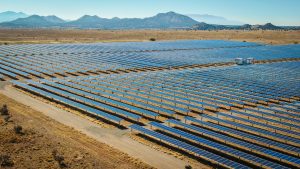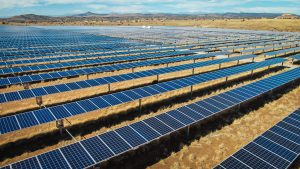Solar Farm Land Requirements
As the demand for clean energy increases, the need for solar panels grows. Widespread collections of these systems are known as solar farms and provide increased energy production for entire communities without contributing to harmful pollution. They also offer additional revenue streams for landowners striving to profit from unused or underdeveloped land.
The first step of development is to find landowners wanting to lease their land for a solar farm. A property must comply with specific solar farm land requirements to ensure a smooth construction process and productive use after completion.

How Much Land Do You Need?
Personal and utility-scale solar farms have unique land needs. An acre or two is enough for a personal solar farm, while larger-scale power projects typically require at least 30 to 40 acres to produce 5 megawatts (MW) of power, requiring roughly 5 acres for 1 MW. That number could extend upwards of 200 acres, depending on a farm’s power capacity needs.
How Close Is the Land to Vital Infrastructure?
Location is key when leasing land for a solar farm. Choosing properties based on their proximity to vital infrastructure like main roads, transmission lines, distribution lines and substations is critical. The land should be within 1,000 feet of three-phase power and less than 5 miles from a substation to access the local utility’s grid conveniently. The farther land is from the grid, the more interconnection will be required, increasing costs and expenses.
How Much Buildable Acreage Does it Have?
Developers often search for clear, flat land with minimal inclines and an adequate supply of buildable acreage or usable land. Land already devoid of trees, shrubbery, bushings and structures is prioritized and often worth more. It’s also wise to choose properties bordered by roads for easy access by construction crews.
It’s unlikely that every inch of a property will be viable for solar farming. Exclusion zones are regions of land where you can’t place solar equipment, such as near federally owned forests and flood zones. It’s also common for local towns to limit solar equipment coverage to around 60% on potential land after restrictions and setbacks.
Exclusion zones that impact land you can lease for a solar farm include:
- Topography
- Waterways
- Wilderness
- National parks
- Grassland
- Dwellings
- Hazardous sites
How Much Sunlight Does the Land Receive?
Leased land for a solar farm needs to receive plenty of sunlight. Consider the presence of sunlight-blocking obstacles, such as trees and buildings, which will increase construction costs. Annual solar radiance is also a signifier of the land’s solar value. Essentially, it is the measure of the solar power land receives, which can help you predict future energy production and success.
What Local Laws Are in Place?
If local laws, permits or land limits restrict the build or are challenging to obtain, it’s unlikely that the solar farm project will go forward, regardless of size, proximity to infrastructure or amount of sunlight.
This obstacle is especially common in areas with fewer solar projects, where guidelines may be restrictive or outdated. Some land could also be home to a protected species of plant or wildlife, which would fall under conservation or environmental protection regulations and further hinder a project.
How Can SelectROW Help You?
SelectROW leverages our experience with comprehensive land and right-of-way acquisition services for solar developers and utility companies across the United States.
Our team has decades of experience with siting and routing, surveying and project management to assist in developing solar farms of any scale. Our end-to-end expertise and use of state-of-the-art technology enable us to keep your project on schedule, obtain the necessary permits and maintain open communication to give you confidence in your solar farm build.
If you’re wondering how to get a solar farm on your land or want to learn more about SelectRow’s services, contact us online to request your proposal today!
